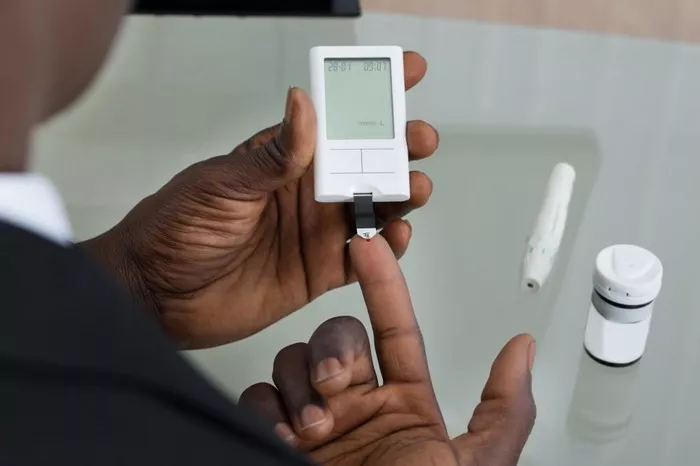The Role of Insulin and Glucose Metabolism in Pregnancy
Insulin and Its Function
Insulin is a hormone produced by the pancreas that regulates blood glucose levels by facilitating the uptake of glucose into cells for energy production. During pregnancy, the demand for insulin increases due to the growing energy needs of both the mother and the developing fetus. The placenta plays a vital role in this process by producing hormones that can interfere with insulin action, thereby increasing insulin resistance.
Changes in Glucose Metabolism
Pregnancy induces a state of insulin resistance to ensure an adequate supply of glucose to the fetus. Early in pregnancy, there is an increase in insulin sensitivity, which promotes the storage of nutrients in preparation for the later stages. As pregnancy progresses, particularly in the second and third trimesters, insulin resistance increases, leading to higher blood glucose levels postprandially (after meals). This shift is crucial for providing a continuous supply of glucose to the fetus, which relies on maternal glucose as its primary energy source.
Phases of Insulin Resistance During Pregnancy
Early Pregnancy: Increased Insulin Sensitivity
In the first trimester, there is typically an increase in insulin sensitivity. This period is characterized by enhanced glucose storage and anabolic processes, which support the mother’s body in preparing for the demands of later pregnancy. The basal metabolic rate also increases, contributing to higher insulin sensitivity.
Mid to Late Pregnancy: Rising Insulin Resistance
From the second trimester onward, insulin resistance begins to rise. This increase is gradual at first but becomes more pronounced as the pregnancy progresses. The hormones produced by the placenta, including human placental lactogen (hPL), cortisol, progesterone, and estrogen, contribute significantly to this insulin resistance. These hormones help to divert glucose from the mother to the fetus.
Peak of Insulin Resistance: The Third Trimester
When Does Insulin Resistance Peak?
Insulin resistance peaks during the third trimester of pregnancy. This period, generally between weeks 24 and 28, is critical as the fetus undergoes rapid growth and development, requiring a substantial and continuous supply of glucose. Studies have shown that insulin resistance increases progressively during the second trimester and reaches its maximum level in the third trimester.
Factors Contributing to Peak Insulin Resistance
Several factors contribute to the peak of insulin resistance during the third trimester:
- Placental Hormones: The placenta produces hormones such as hPL, which antagonizes the action of insulin, increasing insulin resistance. These hormones ensure that sufficient glucose is available for the fetus.
- Increased Fat Mass: Pregnant women tend to gain fat mass, which can exacerbate insulin resistance. Adipose tissue releases free fatty acids and pro-inflammatory cytokines, which interfere with insulin signaling.
- Inflammatory Mediators: Pregnancy is associated with a state of mild chronic inflammation, characterized by increased levels of inflammatory cytokines. These cytokines can impair insulin signaling pathways, further increasing insulin resistance.
- Nutritional Demands: The growing fetus imposes significant nutritional demands on the mother. To meet these demands, the mother’s body increases insulin resistance to ensure a steady supply of glucose to the fetus.
Clinical Implications of Peak Insulin Resistance
Gestational Diabetes Mellitus (GDM)
The peak of insulin resistance during the third trimester has significant clinical implications. If the mother’s pancreas cannot produce enough insulin to overcome the increased resistance, blood glucose levels rise, leading to gestational diabetes mellitus (GDM). GDM is a condition characterized by glucose intolerance with onset or first recognition during pregnancy. It affects approximately 7-10% of pregnancies and is associated with increased risks for both the mother and the fetus.
Risks to the Mother
For the mother, GDM increases the risk of preeclampsia, cesarean delivery, and the development of type 2 diabetes mellitus later in life. Monitoring and managing blood glucose levels are essential to minimize these risks. Women with GDM may require lifestyle modifications, dietary changes, and in some cases, insulin therapy to maintain optimal glucose control.
Risks to the Fetus
For the fetus, maternal hyperglycemia can lead to excessive growth (macrosomia), which increases the risk of birth injuries and the need for cesarean delivery. Infants born to mothers with GDM are also at higher risk of developing obesity and type 2 diabetes later in life. Moreover, they may experience neonatal hypoglycemia (low blood sugar) shortly after birth due to the high insulin levels they were exposed to in utero.
Monitoring and Managing Insulin Resistance in Pregnancy
Screening for GDM
Screening for GDM is typically performed between weeks 24 and 28 of pregnancy, coinciding with the peak of insulin resistance. The most common screening test is the oral glucose tolerance test (OGTT), which measures the body’s response to a glucose load. Early identification and management of GDM are crucial to reduce the associated risks.
Lifestyle Interventions
Lifestyle interventions are the first line of treatment for managing insulin resistance and GDM. These interventions include:
- Dietary Modifications: A balanced diet with appropriate carbohydrate intake can help maintain stable blood glucose levels. Emphasis is placed on complex carbohydrates, fiber, lean proteins, and healthy fats.
- Physical Activity: Regular physical activity improves insulin sensitivity and helps control blood glucose levels. Activities such as walking, swimming, and prenatal exercise classes are beneficial.
- Weight Management: Maintaining a healthy weight gain during pregnancy is important. Excessive weight gain can exacerbate insulin resistance and increase the risk of GDM.
Medical Interventions
When lifestyle interventions are insufficient to control blood glucose levels, medical interventions may be necessary. These include:
- Insulin Therapy: Insulin injections may be required for women who cannot achieve target blood glucose levels through diet and exercise alone. Insulin therapy is tailored to individual needs and closely monitored.
- Oral Hypoglycemic Agents: In some cases, oral medications such as metformin may be used to manage blood glucose levels. However, the safety and efficacy of these medications during pregnancy need careful consideration.
Postpartum Considerations
Resolution of Insulin Resistance
After delivery, insulin resistance typically resolves as the placental hormones are no longer present. Blood glucose levels usually return to normal, and insulin sensitivity improves. However, women who have had GDM are at higher risk for developing type 2 diabetes in the future and should undergo postpartum glucose testing to assess their glucose tolerance status.
Long-term Health Implications
Long-term follow-up is important for women with a history of GDM. Lifestyle modifications, regular physical activity, and maintaining a healthy weight can help reduce the risk of developing type 2 diabetes. Breastfeeding also has beneficial effects on glucose metabolism and can lower the risk of diabetes for both the mother and the infant.
Monitoring and Prevention
Regular monitoring of blood glucose levels, blood pressure, and lipid profiles is essential for women with a history of GDM. Healthcare providers should emphasize the importance of healthy lifestyle choices and provide ongoing support to reduce the risk of long-term complications.
See also: What Type of Diabetes is Associated with Insulin Resistance?
Conclusion
Insulin resistance is a normal and essential aspect of pregnancy, peaking in the third trimester to ensure an adequate supply of glucose to the growing fetus. However, excessive insulin resistance can lead to gestational diabetes mellitus, posing risks to both the mother and the fetus. Understanding the timing and factors contributing to peak insulin resistance is crucial for effective monitoring and management. Through lifestyle interventions, medical treatments, and postpartum follow-up, the risks associated with insulin resistance and GDM can be mitigated, promoting better health outcomes for both mother and child.
Related topics:
What are Insulin Resistance’s Diagnosis and Implications



























